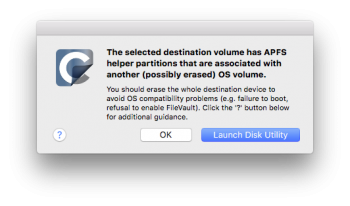hi,
I am using a cMP 4.1 -> 5.1 running 10.13.6.
As Apple doea not offer to properly run FileVault on my configuration with a TITAN X installed, I am searching for a good alternative!
I am planning on enabling a Firmware Password for HW encryption.
A Yubikey for an additional login security layer.
„FileVault“ for software encryption.
Does here anyone use another software similar to FV? What would you suggest?
Thx in advance!
I am using a cMP 4.1 -> 5.1 running 10.13.6.
As Apple doea not offer to properly run FileVault on my configuration with a TITAN X installed, I am searching for a good alternative!
I am planning on enabling a Firmware Password for HW encryption.
A Yubikey for an additional login security layer.
„FileVault“ for software encryption.
Does here anyone use another software similar to FV? What would you suggest?
Thx in advance!


